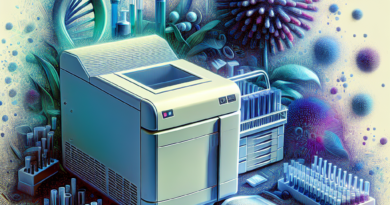PCR-Based Discrimination of Escherichia coli K-12 Strains for Biotechnological Safety
Understanding the Genetic Identification of Escherichia coli K-12 Strains
Escherichia coli (E. coli) is a bacterium commonly found in the lower intestine of warm-blooded organisms. While most E. coli strains are harmless, some can cause serious food poisoning in humans. Among the numerous strains of E. coli, the K-12 strain holds a special place in biotechnological and genetic research due to its long history as a model organism in laboratory studies.
Background: The Significance of E. coli K-12 in Research
The K-12 strain of E. coli was first isolated in 1922 and has since become the most extensively studied prokaryote in biology. Its popularity in the lab stems from its well-characterized genetics, ease of manipulation, and status as a biosafety level 1 organism, meaning it poses minimal risk to humans and the environment. However, the increasing number of E. coli strains, including derivatives of K-12 and other laboratory strains, has made it challenging to accurately identify the origins of these strains. This is crucial for interpreting experimental data and ensuring biological safety.
One key feature that distinguishes E. coli K-12 from other strains is the absence of the O antigen, part of the lipopolysaccharide layer of the bacterial cell wall, which is encoded by the rfb gene cluster. Mutations in this gene cluster, particularly the rfb-50 mutation, are characteristic of K-12 derivatives.
Methods: PCR Assays for Strain Identification
To address the challenge of strain identification, researchers have developed a specific polymerase chain reaction (PCR) assay based on the genetic structure of the O-antigen gene cluster (rfb) of E. coli K-12. PCR is a widely used technique in molecular biology to amplify specific DNA sequences, making it easier to study the genetic material present in an organism.
Results: Discriminating K-12 Derivatives from Other Strains
Using two sets of oligonucleotide primers targeting the rfb gene cluster, the study successfully differentiated K-12 derivatives from other E. coli strains. The first PCR assay identified the presence of the rfb-50 mutation, which is characteristic of K-12 derivatives, by amplifying a 0.97-kb band from the orf264-IS5 junction in all 39 analyzed K-12 derivative strains. The second PCR assay was designed to amplify a segment of orf264 flanking the insertion locus of IS5 in K-12 derivative strains, which resulted in a 1.69-kb fragment in all K-12 derivatives except for two strains, AB311 and YN2980, indicating a side lineage of K-12 derivatives.
The study’s sampling included 90 different E. coli strains from various sources and 29 Salmonella and Shigella isolates. The PCR method reliably identified all 39 K-12 derivative strains and excluded all other strains, despite their apparent similarities to K-12 derivatives.
Impact and Future Prospects
The ability to rapidly and accurately identify E. coli K-12 strains is invaluable in the context of biological safety and the integrity of biotechnological research. This study provides a robust tool for monitoring strains used in gene cloning and expression vectors, ensuring that only biologically safe vehicles are employed.
The specificity of the PCR assays developed in this research could pave the way for more streamlined strain verification processes in laboratories worldwide. It also highlights the importance of genetic tools in maintaining biosecurity and the reliability of experimental results. As biotechnology continues to advance, such methods will become increasingly vital in differentiating between the multitude of microbial strains used in research and industry.
Reference
Kuhnert, P., Nicolet, J., & Frey, J. (1995). Rapid and accurate identification of Escherichia coli K-12 strains. Applied and Environmental Microbiology, 61(11), 4135–4139. http://dx.doi.org/10.1128/aem.61.11.4135-4139.1995




